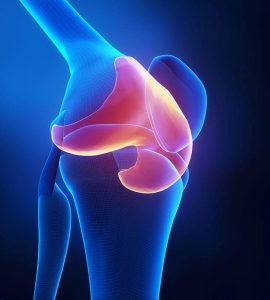The shoulder is one of the most mobile joints in the body, allowing us to lift, rotate, and extend our arms in multiple directions. This remarkable range of motion comes with a trade-off: the shoulder is also more vulnerable to injury. Among the injuries that can affect the shoulder, labrum tears are a common source of pain and instability.
What Is the Shoulder Labrum?
A FOOSH injury occurs when you fall forward or backward and land with your arm outstretched to break the impact. This sudden force travels through the hand and wrist into the arm, sometimes reaching the The shoulder joint is a ball-and-socket joint, where the head of the upper arm bone (humerus) sits inside a shallow socket of the shoulder blade (glenoid). To deepen this socket and provide stability, a ring of cartilage called the labrum surrounds the joint.
The labrum acts like a cushion, absorbing impact and keeping the joint stable during movement. When the labrum is torn, the shoulder can become painful, weak, or unstable, making daily activities and sports more difficult.
What Is the Shoulder Labrum?
Labrum tears can occur in different parts of the shoulder and are classified into several types:
-
SLAP Tears (Superior Labrum Anterior and Posterior)
A SLAP tear affects the top portion of the labrum, where the biceps tendon attaches. These injuries are often linked to repetitive overhead activities, such as throwing sports or swimming, and can also result from falls or sudden trauma.
-
Bankart Tears
A Bankart tear occurs in the lower part of the labrum and is commonly associated with shoulder dislocations. When the labrum is torn in this area, the shoulder is more likely to dislocate again.
-
Posterior Labrum Tears
Less common, posterior labrum tears typically result from trauma, weightlifting, or repeated stress on the back of the shoulder.
Common Causes and Risk Factors
Labrum tears can happen suddenly due to trauma or develop gradually from repetitive strain. Some of the most common causes include:
- Shoulder dislocations – The labrum can tear when the humeral head is forced out of the socket
- Repetitive overhead motions – Sports like baseball, volleyball, or swimming increase wear and tear on the labrum
- Heavy lifting – Weightlifting or carrying heavy loads can strain the shoulder joint
- Falls or direct trauma – Landing on an outstretched arm or receiving a strong impact to the shoulder can cause an acute tear
Age-related changes can also make the labrum more susceptible to injury over time.
Signs and Symptoms
Recognizing the signs of a shoulder labrum tear can help you seek treatment before the injury worsens. Common symptoms include:
- Deep, persistent shoulder pain, often during overhead or behind-the-back movements
- A catching, clicking, or popping sensation in the joint
- Weakness or reduced shoulder stability
- Limited range of motion or pain during sports and lifting activities
- Feeling that the shoulder could “slip out” or dislocate
Because these symptoms can overlap with other shoulder conditions like rotator cuff injuries, a proper evaluation by an orthopaedic specialist is important.
What Is the Shoulder Labrum?
Diagnosing a labrum tear involves a detailed medical history and physical examination. Your doctor may perform specific shoulder tests to check for instability or pain triggers. Imaging studies are often then used for confirmation:
- X-rays – Rule out fractures or bone spurs that may contribute to symptoms
- MRI with contrast – Provides detailed images of the labrum and can detect subtle tears
- CT scans – Used in complex cases or when bone involvement is suspected
In some cases, an arthroscopy may be used to both diagnose and treat the tear.
Treatment Options
The treatment plan for a shoulder labrum tear depends on the type, severity, and your activity level. Many patients start with conservative, non-surgical options, while others may need surgery for complete recovery.
Non-Surgical Treatments
- Rest and activity modification to prevent further strain
- Anti-inflammatory medications to reduce pain and swelling
- Physiotherapy to strengthen the rotator cuff and stabilizing muscles
- Corticosteroid injections in cases of persistent inflammation
Non-surgical care is often effective for partial tears or mild injuries.
Surgical Treatments
Surgery may be recommended for patients with persistent pain, shoulder instability, or high activity demands. Arthroscopic surgery is the most common approach and may involve:
- Repairing the torn labrum with sutures and anchors
- Removing loose or damaged tissue (debridement)
- Addressing any associated shoulder instability
Post-surgery, a structured rehabilitation program is given to restore strength, flexibility and joint stability.
Recovery and Rehabilitation
Recovery from a labrum tear depends on the severity of the injury and the chosen treatment.
- Mild tears managed non-surgically may improve in several weeks to a few months
- Surgical recovery often takes three to six months, with physiotherapy playing a key role
A gradual return to sports or strenuous activities is important to prevent reinjury. Consistent rehabilitation and proper shoulder mechanics will significantly improve long-term outcomes.
Preventing Shoulder Labrum Injuries
While not all shoulder injuries are preventable, you can lower your risk by:
- Strengthening the rotator cuff and upper back muscles
- Avoiding sudden increases in heavy lifting or overhead activities
- Practicing proper form during sports and workouts
- Addressing shoulder pain early rather than pushing through discomfort
When to See an Orthopaedic Specialist
If you experience persistent shoulder pain, weakness, or instability that affects your daily life or athletic performance, it is time to consult an orthopaedic specialist. Early evaluation and treatment can prevent further damage and help you return to your activities safely.




